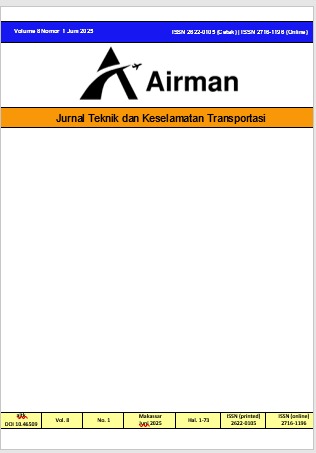Tensile Test Analysis with Fibre Direction Variations of Coconut Fibre Reinforced Composites as Materials in Aircraft
DOI:
https://doi.org/10.46509/ajtk.v8i1.734Keywords:
Composite, Test Pull Strength Fiber Orientation SuppleAbstract
This study examines the influence of fiber orientation on the mechanical performance of coconut fiber-reinforced composite materials using the three-point bending test method. Fiber orientations of 0°, 45°, and 90° were tested at a loading speed of 5 mm/min to determine their effect on strength and flexibility. The results demonstrate that orientation plays a decisive role in the structural behavior of the composites. The 0° orientation achieved the highest maximum force of 71.41 N with a maximum displacement of 19.02 mm, reflecting superior flexibility and load-bearing capacity. In contrast, the 45° and 90° orientations exhibited lower force resistance and reduced deformation before structural failure, confirming the strong dependence of performance on fiber alignment. By employing coconut fiber as reinforcement, this study establishes clear experimental evidence of its mechanical potential, particularly when fibers are aligned parallel to the applied load. The outcomes emphasize the capability of coconut fiber composites to serve as lightweight, sustainable, and eco-friendly alternatives to conventional synthetic fiber materials. These insights not only advance the understanding of natural fiber orientation in composite design but also provide practical implications for their integration into structural applications, including the aviation industry.
Downloads
Published
How to Cite
Issue
Section
License
Copyright (c) 2025 Ravi Endre Saputra, Muh. Reza Alfariza, Sukarwoto, Hendri Louis Latif

This work is licensed under a Creative Commons Attribution 4.0 International License.
This work is licensed under a Creative Commons Attribution 4.0 International License.












